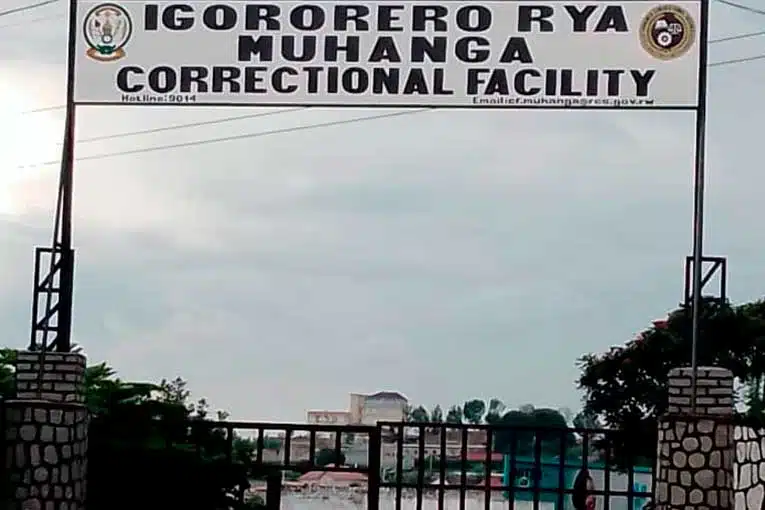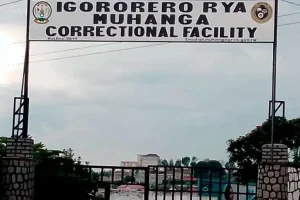Read about the worst prisons in the world, where torture, overcrowding, and neglect reign.
When we talk about the worst prisons in the world, we uncover stories not just of confinement, but of human suffering at its most extreme. Behind fortified walls and iron bars, thousands of inmates endure cruelty, starvation, and neglect that defy the basic standards of human rights. From the jungles of Africa to the deserts of the Middle East, these prisons serve as grim reminders of justice systems gone wrong — where punishment replaces humanity.
1. Muhanga Correctional Facility, Rwanda
The Muhanga Correctional Facility sits high on the list of the worst prisons in the world. Designed for a few hundred inmates, it now holds thousands. Overcrowding is severe, sanitation is poor, and diseases spread rapidly. Inmates sleep standing or packed tightly on the floor, surviving on scarce food and contaminated water. Many die silently, forgotten by a justice system that values punishment over rehabilitation.
2. Guantanamo Bay Detention Camp, Cuba (US controlled)
Among the most infamous detention sites globally, Guantanamo Bay symbolises the blurred line between justice and abuse. Prisoners have faced years of detention without trial, reports of torture, and psychological torment. For many, freedom is a fading dream. Its continued operation stands as one of the starkest examples of the worst prisons in the world, where secrecy and politics overshadow accountability.
3. Camp 14, North Korea
Deep within the mountains of North Korea lies Camp 14 — a political prison camp where generations are punished for the alleged crimes of their ancestors. Prisoners live in constant terror, forced into labour, starvation, and brutality. Escape is nearly impossible, and survivors recount stories of torture and public executions. This camp epitomises the worst prisons in the world, where humanity is stripped away entirely.
4. Bang Kwang Central Prison, Thailand
Locally nicknamed the “Bangkok Hilton,” this prison’s glamorous name hides a grim reality. Death-row inmates are kept in chains, and many prisoners endure life in overcrowded cells with minimal medical care. Malnutrition and disease are common. With little chance of appeal or reform, Bang Kwang remains one of Asia’s most notorious institutions — an enduring example of inhumane prison conditions.
5. Mumbai Central Jail, India
Mumbai Central Jail, one of India’s oldest facilities, houses far more inmates than it was ever meant to. Dirty water, limited food, and outbreaks of disease define daily life. Violence between prisoners and guards is rampant, while rehabilitation programs are nearly nonexistent. Its overcrowded cells and collapsing infrastructure make it one of the worst prisons in the world and a reflection of India’s wider prison crisis.
6. Penitentiary of New Mexico, USA
The 1980 riot at the Penitentiary of New Mexico remains one of the bloodiest in American prison history. Decades later, the scars remain — both on the building and in the system. Solitary confinement is overused, mental health services are inadequate, and overcrowding continues. Despite being in a developed nation, it mirrors the same brutal traits seen in the worst prisons in the world.
7. HM Prison Belmarsh, United Kingdom
Belmarsh is the United Kingdom’s highest-security prison, often called the “British Guantanamo.” Housing terrorism suspects and violent offenders, it suffers from chronic overcrowding, poor mental health services, and limited rehabilitation opportunities. Suicides and self-harm rates are alarmingly high, making it a troubling entry among the worst prisons in the world.
8. Tadmor Military Prison, Syria
Few places have symbolised state terror like Tadmor. Under the Assad regime, it became a slaughterhouse where prisoners were tortured, executed, and buried without names. Survivors recount inhumane treatment and public beatings. Although reportedly destroyed, its legacy of horror ensures Tadmor’s place among history’s worst prisons in the world.
9. Gitarama Prison, Rwanda
Built for 400 but housing over 7,000 inmates, Gitarama Prison is a place of constant death. Prisoners once stood for hours due to a lack of space. Diseases like gangrene, dysentery, and tuberculosis spread unchecked. Many inmates resorted to violence or cannibalism to survive. It’s a haunting reminder of how far prison systems can fall when humanity is abandoned.
10. Petak Island Prison, Russia
Situated in the icy isolation of Lake Novozero, Petak Island is home to Russia’s most dangerous criminals. Prisoners spend nearly all their time in solitary cells, surrounded by silence and despair. Psychological decay replaces physical abuse as inmates lose their sense of identity and time. Isolation becomes a slow death sentence — a mental torment fitting for the worst prisons in the world.
Global Patterns of Neglect
Across continents, the patterns are the same, such as overcrowded prisons, malnutrition, poor sanitation, and violence. The worst prisons in the world exist not only in poor nations but also in developed countries that prioritise punishment over rehabilitation. Political prisoners, low-level offenders, and even innocent detainees are trapped in systems built on neglect.
These facilities expose a harsh truth: many nations treat prisoners as disposable. Instead of focusing on correction, they perpetuate cycles of abuse that destroy lives and families.
A cry for reform
The global prison crisis calls for immediate reform. Governments must enforce human rights standards and replace retribution with rehabilitation. International watchdogs like Amnesty International and Human Rights Watch have long documented the abuse, but systemic change remains slow.
The first step is recognition, acknowledging that the worst prisons in the world are not isolated horrors but symptoms of deeper societal decay. True justice requires compassion, oversight, and the courage to prioritise humanity over punishment.
The worst prisons in the world remind us of what happens when power operates without accountability. They are not merely buildings of stone and steel. They are mirrors reflecting our collective failure to uphold dignity. Until reform replaces repression, these prisons will continue to serve as dark symbols of what justice should never become.




